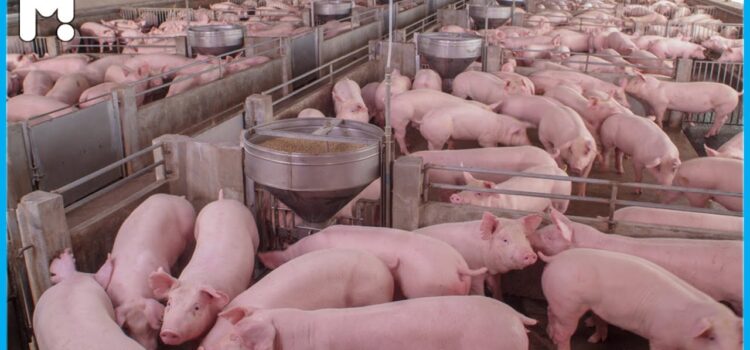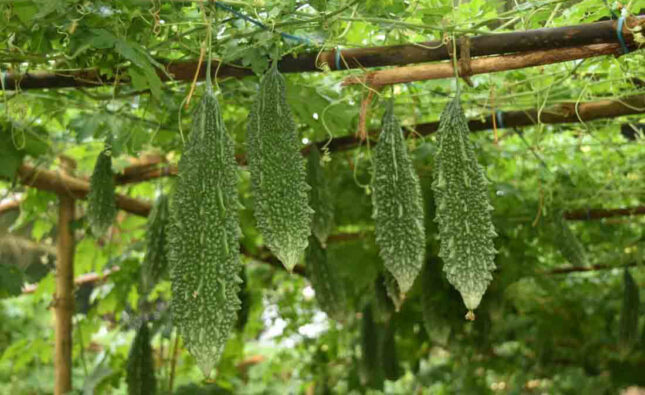Pig farming, also known as swine production, is the raising and breeding of domestic pigs for various purposes, including meat production, breeding stock, and biomedical research. Pigs are intelligent and adaptable animals that have been domesticated for thousands of years. Pig farming can range from small-scale operations with a few pigs to large commercial enterprises. Learn more about Profitable Startups of Pig Farming below.
Here are some key aspects of pig farming:
- Housing:
Pigs require adequate housing to provide shelter, protection from extreme weather conditions, and a comfortable environment. Housing can vary depending on the scale of the operation, ranging from simple huts or barns to temperature-controlled buildings in commercial settings.
2. Feeding:
Pigs are omnivorous animals and have a diverse diet. They can be fed with a variety of feeds, including grains, soybean meal, vegetables, and other agricultural by-products. Commercial pig farms often use formulated feeds to meet the nutritional requirements of pigs at different stages of growth.
3. Breeding:
Breeding stock is essential for pig farming. Selective breeding is done to improve desirable traits like growth rate, meat quality, mothering ability, and disease resistance. Pigs can have large litters, and artificial insemination is commonly used to facilitate controlled breeding.
4. Waste Management:
Pig waste management is a significant aspect of pig farming. Waste can be collected and utilized as fertilizer or converted into biogas through anaerobic digestion. Proper waste management practices are essential to minimize environmental impact and prevent the spread of diseases.
5. Market and Marketing:
Pig farmers need to have a good understanding of the market demand for pork products. Profitable Startup of Pig Farming marketing strategies may include selling live pigs to slaughterhouses, direct sales to consumers, or supplying pork to wholesalers and retailers. It’s important to note that pig farming practices can vary depending on factors such as the region, scale of operation, and specific regulations and guidelines set by local authorities. Additionally, animal welfare considerations and sustainable farming practices are becoming increasingly important in modern pig farming.
Health and Disease Management in pig
Health and disease management is a critical aspect of pig farming to ensure the well-being and productivity of the animals. Here are some key practices for managing health and preventing diseases in pigs:
- Regular Health Monitoring:
Implement a routine health monitoring program to detect any signs of illness or abnormalities early. This includes observing pigs for changes in behavior, appetite, body condition, or fecal consistency. Regularly check their body temperature and respiratory rates. Sick or compromised animals should be isolated and provided with appropriate veterinary care.
2. Vaccinations:
Vaccinations are an important preventive measure to protect pigs against common diseases. Consult with a veterinarian to develop a vaccination schedule tailored to the specific disease risks in your area. Vaccines are available for diseases such as porcine circovirus, porcine parvovirus, swine influenza, and others.
3. Parasite Control:
Parasites, such as internal worms and external pests like mites and lice, can cause health problems in pigs. Develop a parasite control program in consultation with a veterinarian. It may involve regular deworming, proper sanitation, and the use of approved medications or insecticides.
4. Good Nutrition:
Proper nutrition is crucial for maintaining the health and immune function of pigs. Provide a balanced and nutritionally complete diet appropriate for the age, weight, and production stage of the animals. Consult with a swine nutritionist to formulate diets that meet the specific nutritional requirements of your pigs.
5. Water Quality:
Ensure pigs have access to clean and fresh drinking water at all times. Regularly check water sources and ensure they are free from contamination or buildup of harmful substances. Contaminated water can lead to waterborne diseases and negatively affect pig health.
6. Environmental Management:
Maintain a clean and well-ventilated environment for the pigs. Proper ventilation helps control humidity, temperature, and air quality, reducing the risk of respiratory diseases. Remove waste and soiled bedding regularly to minimize disease transmission.
7. Biosecurity Measures:
Implement strict biosecurity protocols to prevent the introduction and spread of diseases. Control access to the farm, limit visitors, and maintain proper sanitation practices. Follow strict hygiene protocols, such as handwashing and the use of protective clothing, to prevent the spread of pathogens between pigs and farm personnel.
8. Veterinary Care:
Establish a relationship with a veterinarian who specializes in swine health. Regularly consult with them for advice on disease prevention, treatment, and management practices. Veterinarians can conduct regular health checks, provide vaccinations, and offer guidance on best practices for pig health and welfare. It is important to stay updated on the latest research, industry guidelines, and veterinary advice regarding pig health and disease management. Collaboration with experts and continuous education is key to ensuring the health and productivity of your pig herd.
Demond Of Pig in The Market
The demand for pigs in the market can vary depending on various factors such as regional preferences, cultural practices, economic conditions, and dietary habits. Pigs are primarily raised for their meat, which is commonly consumed worldwide. Here are some factors that influence the demand for pigs in the market:
- Consumer Preferences:
Consumer preferences play a significant role in shaping the demand for pork products. Taste preferences, cultural practices, and dietary habits can vary among different regions and communities. For example, some cultures have a long-standing tradition of consuming pork, while others may have dietary restrictions or preferences that affect demand.
2. Population and Economic Growth:
Growing populations and improving economic conditions in certain regions can lead to an increase in meat consumption, including pork. As disposable incomes rise, people may have more purchasing power and a greater ability to include pork in their diets.
3. Urbanization and Changing Lifestyles:
Urbanization and changing lifestyles often influence dietary choices. As more people migrate to urban areas and adopt fast-paced lifestyles, there may be an increased demand for processed and convenience pork products.
4. Export Opportunities:
The demand for pigs can be influenced by export opportunities. Some countries or regions may have a high demand for pork products, which can drive production and trade. Export markets can significantly impact the overall demand and profitability of pig farming.
5. Health and Nutritional Considerations:
Consumer awareness of health and nutritional aspects of meat products can influence demand. Factors such as perceived quality, safety, and nutritional benefits may affect consumer choices. For example, a growing interest in lean cuts of meat or organic and antibiotic-free pork can impact demand.
6. Price and Affordability:
Price is a crucial factor in determining the demand for pork. Affordability plays a significant role in consumer decision-making. Fluctuations in the price of pork, compared to alternative meats, can influence demand.
7. Government Policies and Regulations:
Government policies and regulations related to meat production, import-export, and food safety standards can have an impact on the demand for pigs. Policies addressing animal welfare, environmental sustainability, and food safety can shape market dynamics and consumer preferences. It’s important to note that market demand for pigs can vary across different regions and markets. Producers and farmers need to assess and adapt to local market conditions, consumer preferences, and emerging trends to meet the demand effectively. Market research, understanding consumer needs, and maintaining quality standards are crucial for successful pig farming operations.
Sales And Marketing Strategies of Pig
When it comes to sales and marketing strategies for pigs, it’s important to consider your target market, the scale of your operation, and the specific goals of your business. Here are some common strategies that can be employed in pig sales and marketing:
- Market Research:
Conduct thorough market research to understand the demand and trends in the pork industry. Identify potential customers, their preferences, and their purchasing habits. This information will help you tailor your marketing efforts to effectively reach your target market.
2. Differentiation and Unique Selling Proposition (USP):
Determine your unique selling points that differentiate your pigs from competitors. This could include factors such as breed quality, sustainable farming practices, animal welfare considerations, or specific product attributes like organic or antibiotic-free pork. Highlight these aspects in your marketing materials to attract customers who value these qualities.
3. Branding and Packaging:
Develop a strong brand identity for your pig products. This includes creating a memorable brand name, logo, and packaging design. Professional branding helps build trust and recognition among customers. Consider using labels or certifications that communicate the quality and integrity of your products.
4. Direct Sales and Relationships:
Establish direct relationships with potential customers such as local restaurants, butcher shops, or specialty food stores. Direct sales allow you to communicate your story, quality standards, and value proposition directly to the buyers. Attend local farmer’s markets or food festivals to showcase your products and engage with customers.
5. Online Presence:
Create a professional website and utilize social media platforms to promote your pig products. Share engaging content such as farm updates, product features, and recipes. Provide information about your farming practices, animal welfare standards, and sustainability initiatives. Engage with your audience by responding to inquiries and reviews.
6. Networking and Partnerships:
Build relationships with other stakeholders in the pork industry, including feed suppliers, veterinarians, and processors. Collaborate with them to explore joint marketing opportunities, co-branding initiatives, or cross-promotions. Participate in industry events, conferences, and workshops to network with potential partners and customers.
7. Customer Education:
Educate your target market about the benefits of consuming pork products from your farm. This can include nutritional information, cooking tips, recipe ideas, and information on sustainable farming practices. Develop content such as blog posts, videos, or webinars to provide valuable information to your customers.
8. Testimonials and Reviews:
Encourage satisfied customers to provide testimonials or reviews about your pig products. Positive feedback and word-of-mouth recommendations can significantly impact your sales and reputation. Consider offering incentives, such as discounts or rewards, for customers who share their experiences.
9. Continuous Improvement and Adaptation:
Stay updated on industry trends, customer preferences, and regulatory changes. Continuously improve your products and processes based on customer feedback and market demands. Flexibility and adaptation to changing market conditions are key to long-term success. Remember that effective sales and marketing strategies are tailored to your specific market, business goals, and customer preferences. Regularly evaluate the performance of your strategies and make adjustments as needed to maximize sales and profitability.






